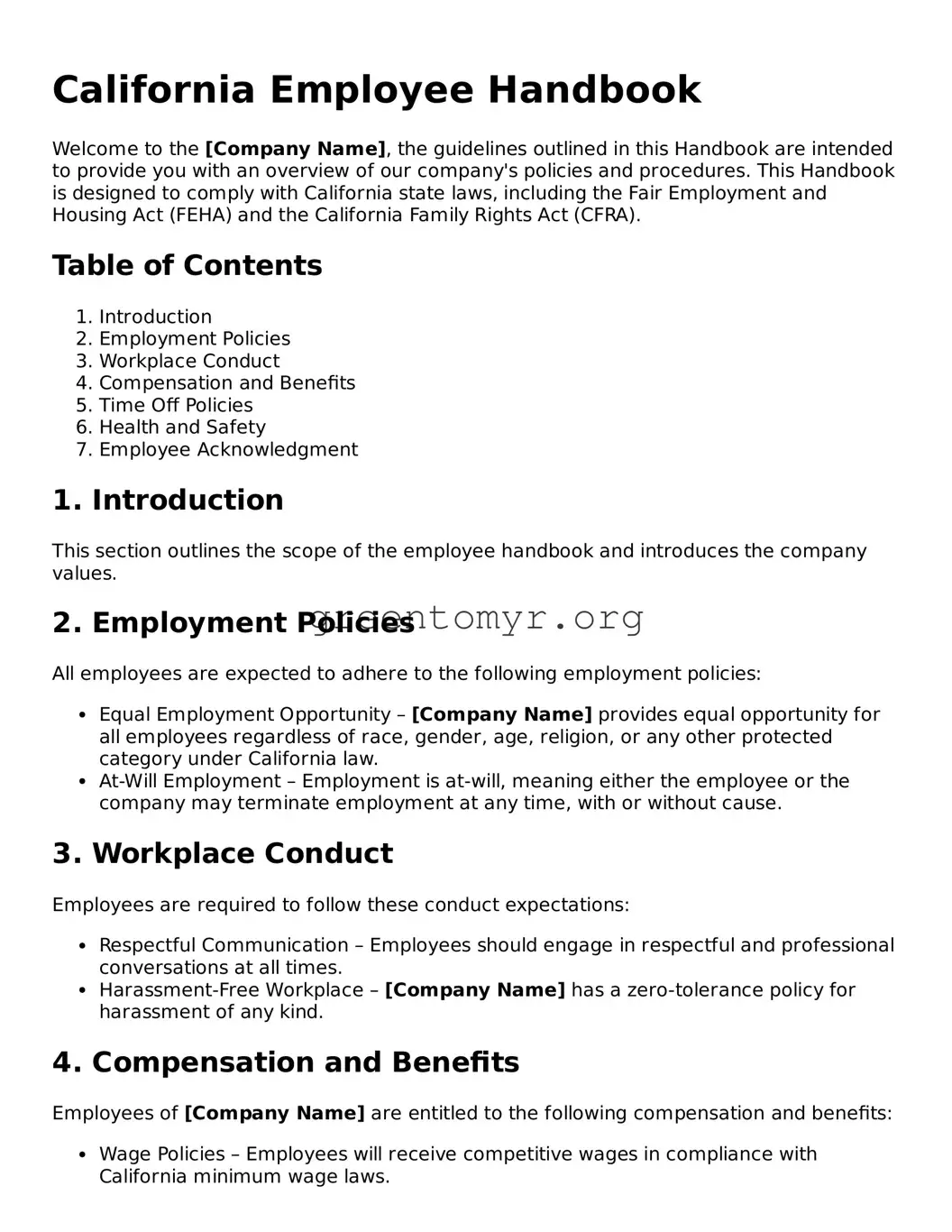The California Employee Handbook form is a document that outlines the policies, procedures, and expectations of an employer in California. It serves as a guide for employees regarding their rights, responsibilities, and the standards of conduct expected within the workplace. The handbook ensures that employees are informed about important topics such as workplace conduct, safety policies, and benefits.
Why is an Employee Handbook important for California employers?
An Employee Handbook is critical for California employers for several reasons. It helps establish clear communication between the employer and employees, reducing misunderstandings. It can also serve as a legal document that protects the employer in case of disputes. By outlining policies in writing, employers can ensure compliance with state and federal laws, minimizing potential legal risks.
Are California employers required to provide an Employee Handbook?
While no law explicitly mandates that California employers create an Employee Handbook, it is highly recommended. Establishing a handbook can help employers articulate their policies. Additionally, some specific laws, such as the Healthy Workplaces, Healthy Families Act, require employers to inform employees of their rights to paid sick leave, which can be accomplished through a handbook.
What topics should be covered in a California Employee Handbook?
A comprehensive California Employee Handbook typically includes the following sections:
-
Introduction to the company
-
Employment policies, including hiring and termination processes
-
Compensation and benefits
-
Workplace conduct and expectations
-
Anti-discrimination and harassment policies
-
Workplace safety and health regulations
-
Leave of absence policies
-
Employee acknowledgment form
How often should the Employee Handbook be updated?
The Employee Handbook should be reviewed and updated regularly. Changes in laws, company policies, or business practices may require updates. It is advisable to conduct an annual review or update the handbook whenever significant changes occur. This practice ensures that the handbook remains current and compliant with applicable regulations.
Is it necessary to distribute the Employee Handbook to all employees?
Yes, distributing the Employee Handbook to all employees is essential. Each employee should receive a copy upon hiring and be required to acknowledge receipt. This process promotes awareness of company policies and helps ensure that employees understand their rights and obligations. It also provides a record that the employer has communicated important information.
Can an Employee Handbook be used as a contractual agreement?
An Employee Handbook is generally not considered a legally binding contract but may carry contractual implications if specific language suggests that it does. To avoid confusion, handbooks often include disclaimers stating that they are not contracts and that employment is at-will, meaning either party can terminate the employment relationship at any time, for any lawful reason.
What is the role of employee acknowledgment in the Employee Handbook?
Employee acknowledgment plays a vital role in the implementation of the Employee Handbook. It confirms that employees have read and understood the policies outlined in the handbook. This acknowledgment can help protect the employer by providing evidence that employees were informed of workplace expectations and procedures in case of disputes.
How can an Employee Handbook help in resolving workplace disputes?
An Employee Handbook can facilitate dispute resolution by providing a clear framework for addressing issues that may arise. When policies are explicitly stated, employees can have clear expectations of behavior and procedures for reporting grievances. A handbook helps ensure that all parties understand the processes involved in resolving disputes, potentially reducing workplace conflicts.
Where can employers find resources to create a California Employee Handbook?
Employers can find a variety of resources for creating a California Employee Handbook through numerous channels, including:
-
Professional HR organizations and consultants
-
Legal resources and publications focusing on employment law
-
State government websites from the California Department of Fair Employment and Housing
-
Online templates and software designed for crafting employee handbooks
